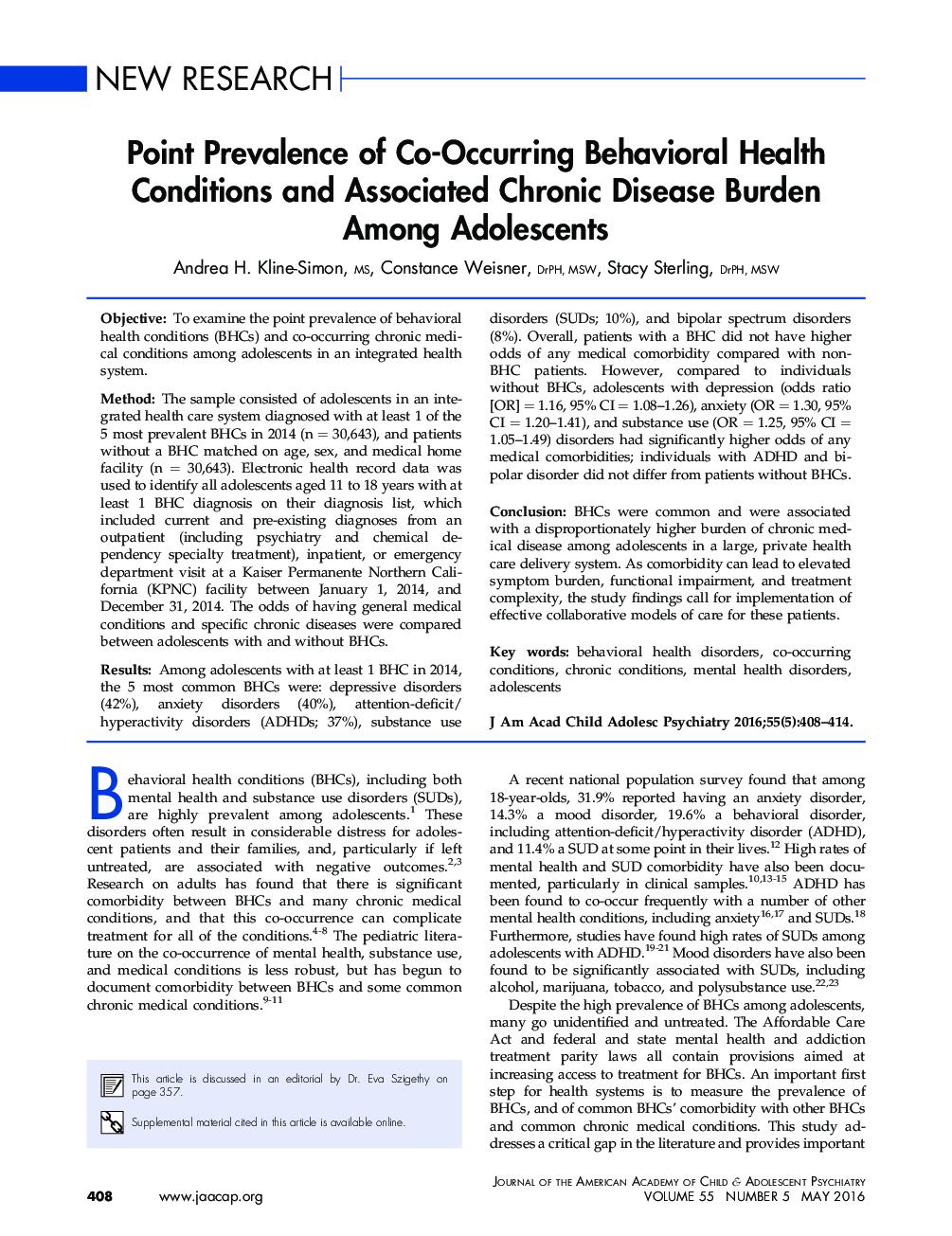| Article ID | Journal | Published Year | Pages | File Type |
|---|---|---|---|---|
| 324459 | Journal of the American Academy of Child & Adolescent Psychiatry | 2016 | 7 Pages |
ObjectiveTo examine the point prevalence of behavioral health conditions (BHCs) and co-occurring chronic medical conditions among adolescents in an integrated health system.MethodThe sample consisted of adolescents in an integrated health care system diagnosed with at least 1 of the 5 most prevalent BHCs in 2014 (n = 30,643), and patients without a BHC matched on age, sex, and medical home facility (n = 30,643). Electronic health record data was used to identify all adolescents aged 11 to 18 years with at least 1 BHC diagnosis on their diagnosis list, which included current and pre-existing diagnoses from an outpatient (including psychiatry and chemical dependency specialty treatment), inpatient, or emergency department visit at a Kaiser Permanente Northern California (KPNC) facility between January 1, 2014, and December 31, 2014. The odds of having general medical conditions and specific chronic diseases were compared between adolescents with and without BHCs.ResultsAmong adolescents with at least 1 BHC in 2014, the 5 most common BHCs were: depressive disorders (42%), anxiety disorders (40%), attention-deficit/hyperactivity disorders (ADHDs; 37%), substance use disorders (SUDs; 10%), and bipolar spectrum disorders (8%). Overall, patients with a BHC did not have higher odds of any medical comorbidity compared with non-BHC patients. However, compared to individuals without BHCs, adolescents with depression (odds ratio [OR] = 1.16, 95% CI = 1.08–1.26), anxiety (OR = 1.30, 95% CI = 1.20–1.41), and substance use (OR = 1.25, 95% CI = 1.05–1.49) disorders had significantly higher odds of any medical comorbidities; individuals with ADHD and bipolar disorder did not differ from patients without BHCs.ConclusionBHCs were common and were associated with a disproportionately higher burden of chronic medical disease among adolescents in a large, private health care delivery system. As comorbidity can lead to elevated symptom burden, functional impairment, and treatment complexity, the study findings call for implementation of effective collaborative models of care for these patients.
